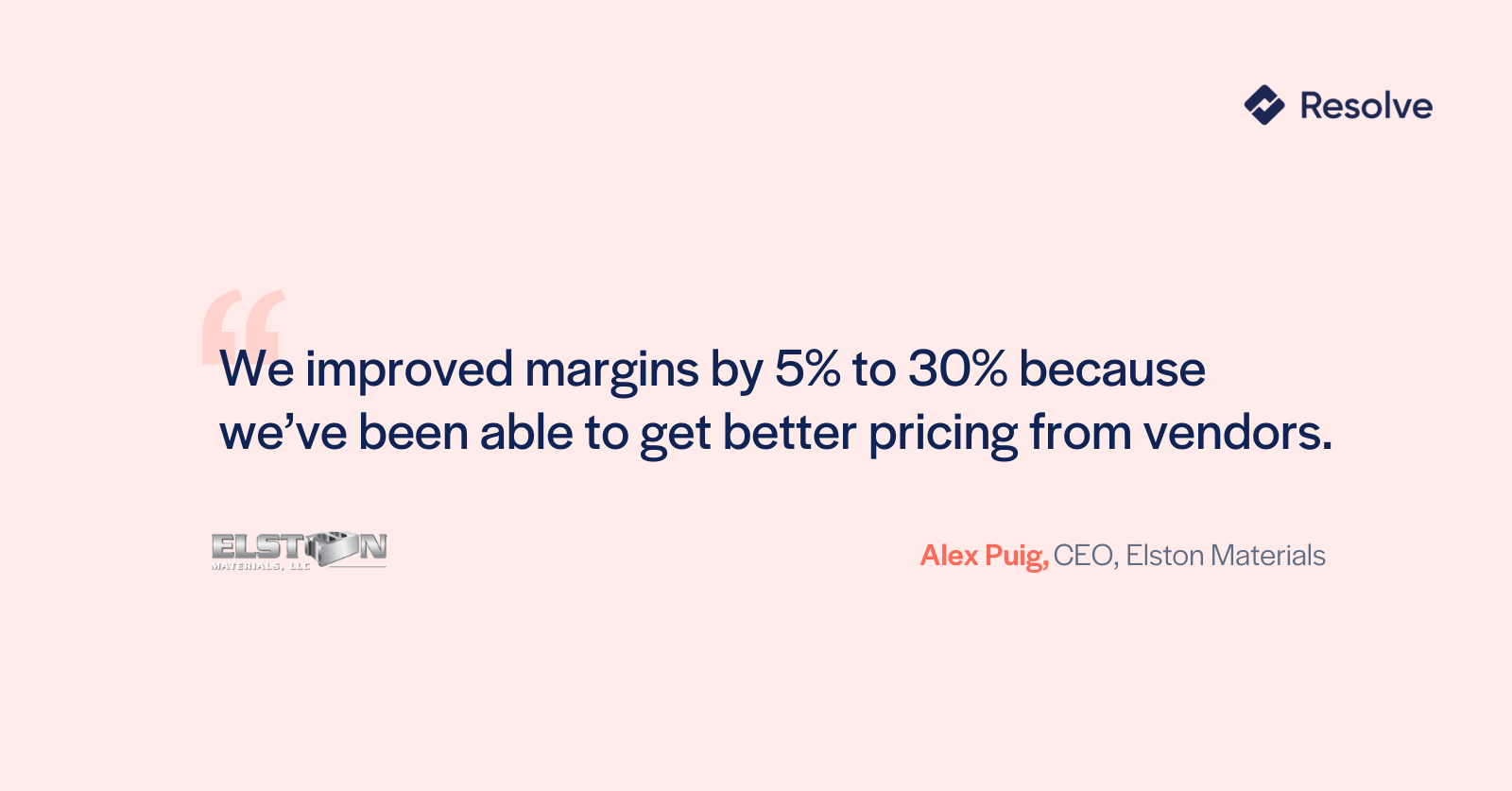Working capital is the lifeblood of any business, ensuring smooth operations and enabling growth. However, optimizing it can seem like a complex and overwhelming task. The good news is that with the right strategies and tools, you can effectively streamline your working capital processes and enhance liquidity, putting you on the path to achieving your business goals.
In this blog post, we will provide a comprehensive guide to working capital optimization, covering everything from proactive management techniques to tracking and measuring program success. We’ll discuss different approaches, including improving cash flow cycles, optimizing inventory management, and tightening credit policies. Additionally, we’ll explore key financial levers, such as negotiating better payment terms with suppliers or extending net terms with customers, that can help you achieve sustainable financial results.
Beyond the immediate benefits of optimizing working capital, we’ll also delve into how these strategies can enhance your overall business agility and resilience, especially in times of economic uncertainty. Whether you're a CFO looking to improve your company's bottom line or a business owner aiming for growth, this guide will provide actionable insights to help you optimize your working capital and strengthen your financial position for the long term.
Working capital optimization: A complete guide
Effective management of a company's working capital is key to ensuring its financial health. Working capital optimization involves managing different components such as receivables and payables while improving cash flow and reducing expenses. This not only improves profitability but also ensures financial stability.
To achieve this goal, companies can adopt strategies like optimizing their supply chain finance or managing their inventory efficiently. Analyzing KPIs and metrics can help in identifying inefficiencies within the system that need to be addressed. By following best practices specific to their industry and leveraging technology like automation or real-time visibility into queries, companies can unlock significant value.
Proactive management techniques
Effective proactive management techniques play a vital role in optimizing working capital. It can enhance financial stability by reducing the need for external financing and improving cash flow by:
- Reviewing financial statements regularly
- Forecasting cash flows
- Monitoring inventory levels
- Optimizing payment terms with suppliers and customers
- Maintaining open communication between departments
Long-term success can be ensured by continually adjusting strategies based on market changes and customer demands. By effectively managing working capital, businesses can achieve better profitability and financial stability, and ultimately a positive balance sheet.
The right team for optimization
To optimize working capital efficiently, businesses need the right team in place. This cross-functional team should ideally comprise of representatives from finance, operations, procurement, and sales to ensure effective communication between departments and stakeholders.
Regularly reviewing metrics such as cash conversion cycle and days payable outstanding can help track progress towards achieving optimal results in areas such as procurement and finance.
Choosing the best approach
To optimize working capital, businesses must first understand their cash flow cycle. Effective inventory management strategies can help reduce excess inventory while also improving liquidity.
Evaluating payment terms with suppliers and customers is another valuable tool for reducing costs and improving cash flow. Financing options like loans, lines of credit, factoring, and working with a company like Resolve that manages your net terms cash flow are worth considering for companies looking to optimize their net working capital.
It's important to remain vigilant in monitoring progress towards goals by examining KPIs such as days sales outstanding (DSO), days payable outstanding (DPO), and cash conversion cycle (CCC).
Partner selection for optimal results
Selecting the right partner is crucial for optimizing working capital. To achieve maximum benefits from your partner selection process, it's essential to align your business goals with those of your partner.
Look for reputable partners with a proven track record and financial stability who can help reduce costs and improve efficiency while increasing revenue. Open communication and clear expectations are vital for successful partnerships in working capital optimization.
Ensuring sustainable optimization
Maintaining a balance between inventory management and cash flow is vital for ensuring sustainable optimization of working capital. Regularly reviewing payment terms with vendors and optimizing them ensures smooth receivables and payables.
Effective cash management strategies such as forecasting and budgeting help in maintaining liquidity. Monitoring accounts receivable and payable avoids delays or defaults. Analyzing and adjusting optimization strategies continually helps in driving profitability.
Learn more: How a Concrete and Masonry Supplier Plans on Growing by 20% with Improved Margins and Morale
Pitfalls to avoid
To ensure sustainable optimization of working capital, it's essential to avoid some common pitfalls. One such issue is prioritizing short-term gains over long-term sustainability.
Additionally, stakeholders such as suppliers and customers should be involved in the process. Without their input and buy-in, implementation can become challenging. Understanding your organization's cash flow needs is also critical for success.
Strategic role of the CFO
The strategic role of the CFO in optimizing working capital cannot be overstated. By ensuring efficient utilization of financial resources and making informed decisions based on a clear understanding of the company's goals and financial position, CFOs play a vital role.
Collaborating with other departments to improve areas like inventory management or accounts receivable and implementing strategies like negotiating better payment terms with suppliers or using technology to streamline processes can significantly optimize working capital.
Measuring success of optimization
Measuring the success of working capital optimization involves analyzing various liquidity ratios such as quick and current ratios and turnover ratios for inventory and accounts receivables while also keeping track of cash conversion cycles.
It's also vital to have a clear understanding of working capital metrics and measuring program success through feedback. CFOs take the lead to improve working capital by managing financial resources effectively and identifying areas that can be enhanced. Ongoing monitoring based on KPIs ensures successful optimization.
Discover: 7 Best Practices to Automate your Accounts Receivables Process
Measuring program success
To gauge if your company’s working capital optimization efforts are effective and efficient, it is vital to track key performance indicators (KPIs). These include monitoring cash flow, and optimizing supply chain finance initiatives like procurement teams or early payment discounts to maximize liquidity.
Regular monitoring of DSO or DPO can help identify inefficiencies in receivables or payables management. Combining real-time visibility into your supply chain with analytics and forecasting tools can unlock significant value.
Gathering feedback for improvement
Collecting stakeholder feedback is a vital aspect of optimizing working capital. It provides insight into inefficiencies and identifies opportunities to streamline processes.
Surveys, interviews, and focus groups are all effective methods for gathering this valuable information. Consistently gathering stakeholder feedback and monitoring progress with KPIs leads to ongoing optimization success.
Payables optimization
To enhance working capital, payables optimization plays a significant role. Procurement teams can:
- Streamline payment processes
- Negotiate favorable payment terms with suppliers
- Implement digital payment systems to reduce costs
Optimizing supply chain finance programs helps maximize liquidity. Analyzing KPIs such as DSO, DPO, and CCC helps measure program success. Regularly monitoring KPIs and gathering feedback from stakeholders ensures ongoing optimization. Deloitte's best practices show that early payment discounts via dynamic discounting generate significant value without compromising the company's financial health.
Maximizing liquidity through procurement
Maximizing liquidity is crucial in working capital optimization. E-procurement platforms are a game-changer for businesses as they allow for better supplier relationships and increased visibility into cash flow.
Efficient payables optimization frees up cash flow, reduces costs, and improves overall financial performance while maintaining optimal liquidity.
Key levers for working capital optimization
Maximizing a company's financial health through effective optimization of its working capital is a complex process that involves managing different components such as inventory management, receivables, payables, and cash conversion cycle. This optimization process requires monitoring KPIs like DSO (days sales outstanding), DPO (days payable outstanding), and DIO (days inventory outstanding) to assess the company's capital efficiency. Effective implementation of technology solutions and best practices can help mitigate risks while improving cash flow dynamics, liquidity position, forecasting accuracy, cost-effectiveness for the company.
Related resources
Maximizing the efficiency of your company's working capital is crucial. You can utilize several resources to achieve this. There are:
- Online tools and calculators to calculate your working capital needs
- Hiring financial advisors or consultants with expertise in working capital management
- Joining industry associations and attending networking events
- Investing in business software solutions that automate processes
- Providing training and education opportunities for employees, among other best practices
Incorporating these levers will significantly improve your company's profitability and financial health.
How can you optimize working capital today?
Working capital optimization is a vital factor in ensuring the long-term success of any business. By optimizing your working capital, you can improve liquidity, reduce expenses, and increase profitability.
However, it can be a complex and challenging process that requires a comprehensive approach. To get started on optimizing your working capital today, book a free consultation with our product experts. We specialize in helping businesses of all sizes streamline their operations and improve their financial performance.







